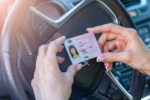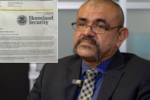A new proposal is currently being discussed that could drastically change how we navigate intersections across the country. The suggestion? Adding a fourth light to traditional traffic signals, which currently consist of only three—red, yellow, and green. This proposal is gaining traction among transportation experts, as it promises to improve traffic flow, reduce accidents, and streamline the driving experience.
Why Add a Fourth Light?
The idea of introducing a fourth traffic light may seem unusual, but it’s a concept aimed at addressing the limitations of current traffic light systems. As cities grow and traffic volumes increase, traditional traffic lights can become inefficient, causing longer wait times, confusion, and an increased risk of accidents.
The proposed fourth light is designed to be an arrow or a dedicated light for a specific type of turn, such as left turns or U-turns, which often require more time and careful execution compared to regular through movements. By creating a clear, dedicated signal for these movements, cities hope to reduce accidents caused by turning vehicles in busy intersections and improve the overall flow of traffic.
How Would the Fourth Light Work?
The concept of the fourth light would not replace the current red, yellow, and green lights but would instead function as an additional light. This light would be dedicated to specific turning movements that require more precise control, especially in busy or complex intersections.
For example, in many cities, left-turn lanes often experience a high volume of traffic, causing delays and confusion. Adding a dedicated left-turn arrow could help drivers make turns safely and efficiently without waiting for a gap in oncoming traffic. Similarly, in intersections where U-turns are common, a fourth light could control these turns separately, reducing potential conflicts with straight-through traffic.
Benefits of the Fourth Traffic Light
There are several potential benefits to introducing a fourth light at intersections, including:
- Improved Traffic Flow: By allocating specific lights for turning movements, vehicles can move through intersections more efficiently, especially during rush hour or high-traffic periods.
- Increased Safety: With clearer instructions for turning drivers, the chances of accidents at busy intersections may decrease, particularly where left turns or U-turns are involved. Fewer conflicts between vehicles turning and through traffic means fewer opportunities for collisions.
- Better Management of High-Traffic Intersections: Adding a fourth light can be particularly useful in complex intersections with multiple lanes and turning movements. By managing these movements separately, the overall intersection can operate more smoothly.
- Reduced Wait Times: With a dedicated light for turns, drivers will not have to wait for gaps in oncoming traffic, thus speeding up the overall process of getting through the intersection.
Challenges of the Proposal
While the idea of a fourth light sounds promising, there are some challenges that need to be considered before it can be widely implemented. For one, many intersections would need to be redesigned to accommodate the fourth light, which could lead to costly upgrades for municipalities. Additionally, there’s the risk that drivers could become confused by the new signal, especially if it’s not properly integrated into existing traffic light systems.
Another concern is how these additional lights might impact overall intersection timing. The more lights that are added, the longer the wait times for each signal cycle could become, potentially reducing the benefits of the system if not managed carefully.
What’s Next for the Proposal?
While this proposal is still in the early stages, it has sparked significant discussion in transportation circles. Cities around the world are increasingly looking for ways to improve urban mobility, and adding a fourth light could become one of the many strategies used to manage traffic in an evolving landscape.
For more updates and detailed information on traffic management strategies, visit the Federal Highway Administration’s website.
Note: Every piece of content is rigorously reviewed by our team of experienced writers and editors to ensure its accuracy. Our writers use credible sources and adhere to strict fact-checking protocols to verify all claims and data before publication. If an error is identified, we promptly correct it and strive for transparency in all updates.








